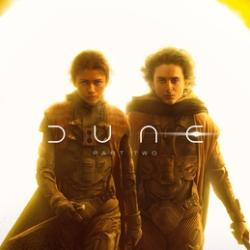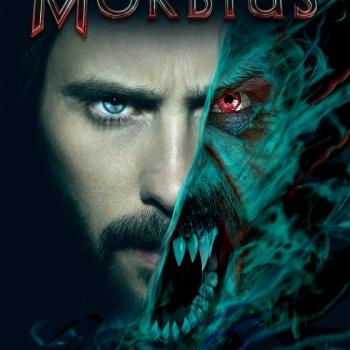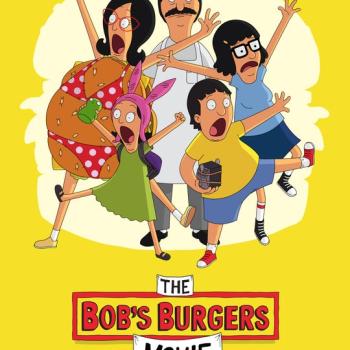Review of Rust and Bone, Directed by Jacques Audiard
By CHRISTIAN HAMAKER
Pity the critic who can’t make heads or tails of what he’s just seen. Readers, who look to him for guidance, will surely be disappointed when he frankly admits he’s not sure about the merits of a particular film.
That’s the case with this critic’s take on Rust and Bone, the new film from Jacques Audiard, whose last film—the Cannes Film Festival prize winner A Prophet—left me similarly befuddled.
And for that reason, I think I love Audiard’s work.
How often are we left with honest questions after seeing a film? How often are our feelings unresolved, or in tension? Criticism is, for many, about the final judgment—or worse, about a quick verdict. I’ve watched Rust and Bone twice now—most recently the night before sitting down to write this—and I’m not sure how to evaluate it, or whether I can, in good conscience, recommend it. But the fact that I’m still thinking about the film—and about A Prophet, a few years after its release—speaks well of Audiard in an era where a filmmakers’ strengths and weaknesses are usually much more easily assessed.
You may have heard about Rust and Bone, which is currently in limited release, and which has generated awards attention for Marion Cotillard’s performance. She plays Stephanie, a trainer of orca whales at a theme park, who loses both lower legs after a routine goes awry. Forced to grapple with her new physical limitations, Stephanie withdraws and isolates herself for a time before reaching out to a nightclub bouncer, Ali (Matthias Schoenaerts), who is scraping by and caring for his son, Sam.
After the accident, Stephanie’s lower legs are CGI’d out of the picture—think of Captain Dan (Gary Sinise) in Forrest Gump—and Cotillard gives an affecting performance as woman who must come to terms with her new limitations. But despite the awards-machine hype surrounding Cotillard’s performance in Rust and Bone, it’s Ali and Sam who give the film most of its passion and heart.
Ali is not only a bruising physical specimen who works as a security guard, nightclub bouncer and underground fighter to support his son, Sam. But he’s also animalistic in his sexual appetite, picking up women for “quickies” when and where he can.
It’s at the nightclub where he meets Stephanie. She has a boyfriend, but she’s tired of him ordering her around. She’s ready to break free from relationships that shackle her. Yet the tragic incident in which she loses her legs binds her more than ever. She’s mostly confined to a wheelchair, which makes mundane activities such as going to the bathroom a major challenge. Withdrawn and in need of companionship, she reaches out to Ali, who becomes her inspiration for moving on with her life. He encourages her to get out more, to swim in the sea. But we know Ali isn’t all tenderness. He’s also a brute. He can be a threat to those he loves, even to his own son.
The story’s trajectory isn’t what you might imagine. There’s no typical romantic arc—a meet-cute, a falling out, an ending driven by reconciliation. No, Audiard is up to something else with Rust and Bone (he co-wrote the screenplay). The film’s second hour is largely devoted to Ali, who finds inspiration in Stephanie’s plight to overcome his own fears and vulnerabilities. (One of the film’s best scenes shows a moment of doubt for Ali—the only time we see him hesitate in fear.) The film becomes more graphic: Ali and Stephanie strike up a physical relationship, and Audiard lingers on their graphic sex scenes. But Stephanie needs more than just casual sex, and Ali needs to be more responsible both to Stephanie and to Sam.
The film’s final stretch—for those who can endure all that comes before—shows Ali’s moral awakening, such as it is. There are no speeches, no religious impulses, but there is a heart-stopping realization of what, and who, are most important in Ali’s life, as well as a declaration of love from a man who has never spoken in such terms until that point.
The movie’s message, to the extent there is one, is summed up by Stephanie, who, in challenging Ali to take their relationship to a higher level, says, “If we continue, we have to do it right. … not like animals.” Rust and Bone is about our primal instincts and urges—how to learn to use them for good, and overcome them when bad.
“Better a patient man than a warrior, a man who controls his temper than one who takes a city,” says Proverbs 16:32. By the end of Rust and Bone, Ali appears to be moving away from a warrior mentality, and learning self-control (Proverbs 25:28). After a difficult but often powerful two hours of celluloid, I’ll take that. And I’ll look forward to what Audiard will do in the future.












